January, 2002: Letter from Birmingham Jail
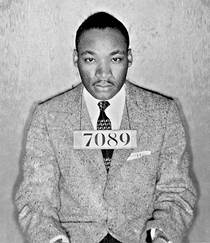
As we again get ready for our day off for the Martin Luther King, Jr. holiday, I would like to call your attention to the famous Letter from Birmingham Jail written by King in 1963. King was in solitary confinement, but was able to get enough scraps of paper, including writing in the margins of a newspaper, to sneak out parts of the letter during several visits by his attorney. The piecemeal parts were assembled by supporters according to King’s detailed instructions and circulated widely to explain the need for nonviolent confrontation to fight injustice. In solitary, King had no resource materials, and so his memorized quotations of others is astounding. The letter was a public response to a newspaper article quoting eight white ministers who had urged that local residents not join King in the demonstrations that led to King’s imprisonment. Click here to read.
For you younger folks, the problems discussed by King were not limited to places like Alabama and Mississippi. As a high school student, I remember being appalled at the separate lunch counters in downtown KC department stores (back when there were downtown department stores). In a political speech last year, I heard a great quote which, in condensed form, noted that South Africa, the British Commonwealth, Pharaoh and Bull Connor had the legal authority, but Nelson Mandela, Gandhi, Moses and Martin Luther King had the moral high ground.
Thanks for listening and have a good holiday.
January, 2003: “I Have a Dream”
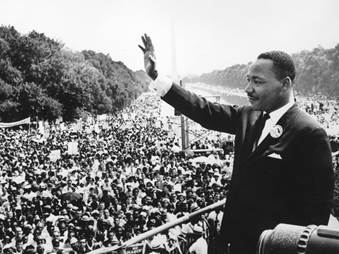
I attach my message from last year. The letter from the Birmingham Jail was released in April of 1963. Four months later, after a meeting with President Kennedy, Dr. King went to the Lincoln Memorial and delivered the “I Have A Dream” speech. In the time period between the letter and the speech, Gov. George Wallace stood at the door of the University of Alabama and refused admission to black students and Medgar Evers was assassinated. Three months after the speech, President Kennedy was assassinated. Click here to read the speech.
January, 2004: Third Annual MLK Message
As you get set for your 3-day weekend, please keep in mind why we get this January break. I again recommend a reading of the Birmingham Jail letter which is a relatively short, but nevertheless powerful message. Likewise, the “I Have a Dream” speech. I have an even greater appreciation for that speech after reading a good book that dissects King’s words/preaching and the atmosphere of the country just before and after the speech. It is The Dream: Martin Luther King, Jr. and the Speech That Inspired a Nation by Drew Hanson.
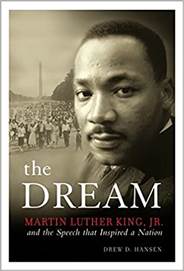
Another good read is one that King often quoted regarding the history of racism in America from the Civil War to Brown v. Board: The Strange Career of Jim Crow by C. Vann Woodward. It came out in 1955 and has never been out of print. Enjoy your weekend.
January, 2005: Fourth Annual MLK Message
As has now been the case for several years, the firm will celebrate the birthday of Martin Luther King by closing the office this coming Monday. I attach my prior messages and again invite you to consider the purpose and meaning of this occasion. Enjoy your holiday.
January, 2006: Rosa Parks/Integration of the Kansas City Bar Association
This past year marked the 50th anniversary of two related events – one with national impact and the other in our hometown. On December 1, 1955, Rosa Parks refused to give up her seat on the bus. Her arrest triggered a 381-day boycott organized by a then little-known Baptist preacher, Rev. Martin Luther King, Jr. Rosa Parks died this past October at age 92.
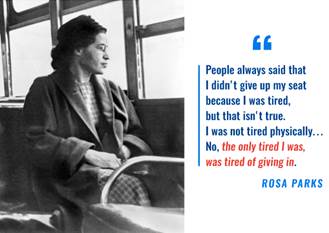
At the beginning of 1955, the Kansas City Bar Association was still an all-white male organization. Irving Achtenberg (photo below), a well-known KC civil rights attorney, tried to help three prominent African American attorneys (one a judge) join the organization, but the executive committee declined to act on the membership applications. Achtenberg and 15 other attorneys wrote a letter to all members of the bar asking for a constitutional amendment to circumvent the executive committee.

At a meeting held on the same day that Rosa Parks was being arrested, the bar passed the amendment with the required two-thirds majority. While they were at it, the term “male” was dropped, opening up the organization to all attorneys, no matter the race or gender. A nice article on the bar association process appeared this past year in the KC Counselor, and if anybody wants a more detailed story, I will be happy to forward a copy. So, as you enjoy your holiday, please raise a toast to these heroes of 50 years ago.
January, 2007: Watch Meeting – Waiting for the Hour
As we all enjoy our day off next Monday, let us remember some of the history that is being celebrated. When Bill Clinton was President, I saw a TV show where he was giving a tour of the White House. In the Lincoln Bedroom, he stopped to point out a painting which depicted a group of slaves waiting by candlelight for the stroke of midnight when the Emancipation Proclamation would take effect and free them from bondage.
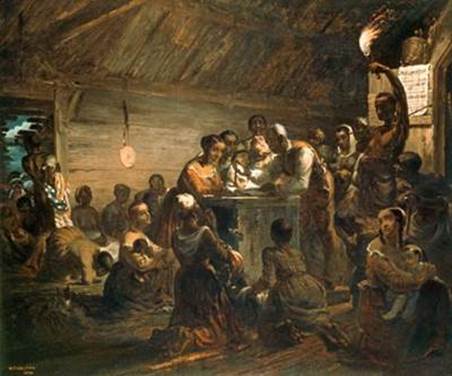
In Clintonesque fashion, he choked up and got misty-eyed when talking about this, and truth be told, I do the same when I tell people about the scene. I tried to find a copy of the painting soon after I saw the show, but could not run it down. However, in the new age of Google, I found a print, and it will soon be hanging in my office. Feel free to drop by and take a look. Watch Meeting – Waiting for the Hour is by William Tolman Carlton, a painter active in the Boston area from 1836 until after the Civil War.
Enjoy your holiday.
January, 2008: Sisters of Selma and William Wilberforce
It is January and this again means we look forward to the MLK firm holiday and the annual Plaza Lights client party. Below is a photo from a Kansas City Business Journal report on lasts year’s party, and I direct your attention to one of our guests, Sister Rosemary Flanigan, speaking with Russ Welsh. In addition to being the aunt of Dan Flanigan (in the center of the photo), she is well known as a spokesperson for St. Joseph Hospital and as a community leader.

In 1965, Sister Flanigan was one of several nuns who participated in a series of marches in Selma, Alabama. There had been brutal beatings of black participants in the first march on March 7, and in spite of the obvious risk, several heroic nuns joined marches over the next two weeks to add support to the cause. They were the subject of a 2007 documentary covering their bravery – Sisters of Selma: Bearing Witness for Change.
January of 2008 is also the 200th anniversary of the banning of the importation of slaves into the United States. Among the compromises leading to the ratification of the Constitution, Congress was prohibited from banning the importation of slaves until 1808. The international slave trade had become widely recognized as a crime against humanity, and Congress (over the objection of some Southern states) abolished the trade as of the first possible date, January 1, 1808. Britain had taken the same action a year earlier after a long crusade by William Wilberforce, a member of Parliament and subject of an excellent 2007 film, Amazing Grace.
Thanks for listening.
January, 2009: “A Change Is Gonna Come”
It is again time for the firm to celebrate a 3-day weekend courtesy of the Martin Luther King holiday. My seven prior annual messages primarily lauded the efforts of heroes who took great risks in fighting for civil rights. This year, the same appreciation should be felt, but there is a new context:
Rosa sat – so Martin could march – so Barack could run – so our children could fly.
These emotional words were circulated during the recent presidential campaign. I hope you will pardon the mention of a political campaign as part of this message which is intended in a broader universal spirit, but it is simply impossible to not recognize what will happen in back-to-back days next week: Monday – MLK Holiday. Tuesday – Inaugural of Barack Obama.
Another emotional campaign communication came with a voiceover by the great soul singer Sam Cooke (click here). Cooke died in 1964, but he had recorded “Shake” which became a hit after his death. The flip side was not as well known then, but “A Change is Gonna Come” became an anthem of the Civil Rights Movement.
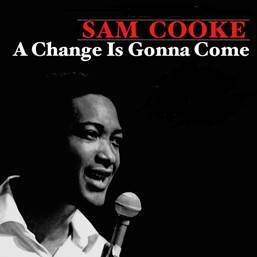
Barack Obama borrowed from the song for his Grant Park speech on election night: “It’s been a long time coming, but tonight,…change has come to America”. Prior to writing his song, Cooke had been moved by how a “white boy,” Bob Dylan, could write so well about racism in his poignant 1963 song “Blowin’ in the Wind” which asked the question “how many years can some people exist, before they’re allowed to be free?”. 45 years after 1963 might appear to be an answer to that question, but as Congressman Emanuel Cleaver wrote in an excellent Washington Post op-ed, the election of Obama is a good step, but there is still plenty of work to do.
So, let us continue to remember King, Rosa Parks, Sister Rosemary Flanigan (2008 below),Irving Achtenberg (2006 below) and the others who led the way to this moment. Also keep in mind Abraham Lincoln as we celebrate the 200th anniversary of his birth on February 12. As Obama often mentions in his speeches, he stands on the shoulders of giants who came before him in the Civil Rights Movement (for those wanting a more complete version on Obama’s debt to what he calls the “Moses generation”, check out his Selma speech of March 4, 2007).
In August of 1963, Martin Luther King gave his “I Have a Dream” speech from the Lincoln Memorial to a huge crowd gathered on the National Mall between the Memorial and the Capitol. Next Tuesday, Barack Obama will be sworn in as President at the opposite end of the Mall before another huge crowd. I am happy to report that Rita and I will in that crowd to witness history in front of the Capitol, but we will also be looking back toward the Lincoln Memorial and remembering those giants of the Moses generation. “But I know a change is gonna come, oh yes it will”
January, 2010: Nelson Mandela
As we approach the Martin Luther King holiday this year, it is timely to give a long distance nod to a civil rights legend from another country. Nelson Mandela is currently in our movie houses in the form of Morgan Freeman to tell the inspiring true story of one of Mandela’s finest acts of reconciliation. The movie is Invictus which is based on John Carlin’s excellent book Playing the Enemy: Nelson Mandela and the Game That Made a Nation.

Mandela was released from prison in 1990; apartheid was abolished in 1993; and he was elected president in 1994. The ending of apartheid also ended the worldwide boycott of South Africa’s sports teams, leading to the country being selected as the host for the 1995 Rugby World Cup. However, the black population still considered the “Springboks” national rugby team to be a symbol of white supremacy and hosting the World Cup did not initially generate universal national pride. President Mandela turned this problem into a political opportunity by publically embracing the Springboks, which not only enlisted the black community as new fans, but also eased the fears of a nervous white population that did not know what to expect under the first post-apartheid government. The Springboks did their part by winning the World Cup in a series of upset victories that excited the whole nation. Upon being asked at the end of the title game about winning for the 60,000 fans at Ellis Park, Springbok captain Francois Pienaar (Matt Damon in the movie) wisely replied that it was actually a victory for 43 million South Africans.
On a personal note, Rita and I traveled to South Africa this past October for a photo safari followed by a week in Cape Town. Our itinerary included taking the ferry from Cape Town to Robben Island where former political prisoners lead tours of the former prison. This is where Mandela spent 18 of his 27 years as a political prisoner. It was quite moving to view his small cell and know that he forgave those responsible so that South Africa could proceed with reconciliation rather than revenge and bloodshed. Mandela, now 91, will long be remembered for his courage, sacrifice and political genius in leading South Africans toward the goal of a rainbow nation.
January, 2011: The Year 1955 – Rosa Parks and Rock and Roll
Some famous names to ponder as we approach the Martin Luther King holiday: Rosa Parks, Bill Haley and the Comets, Fats Domino, Chuck Berry and Liu Xiaobo. The year was 1955. In July, “Rock Around the Clock” by Bill Haley was #1 on the pop charts. Also hitting the charts that summer were Fats Domino’s “Ain’t That a Shame” and Chuck Berry’s “Maybellene”. On December 1, Rosa Parks refused to move to the back of the bus. On December 28, Liu Xiaobo was born.
Rosa’s cause was taken up by Martin Luther King who led the 381-day Montgomery bus boycott that became one of the milestones of the Civil Rights Movement. This past October, Chinese dissident Liu Xiaobo was awarded the Nobel Peace Prize, but could not attend the ceremony because he is in jail for his human rights campaign. Nobel officials stated they were not intending to insult China, but instead believed the situation was similar to the 1964 award to Martin Luther King who was defying the authorities to fight for civil rights in America – the 1964 prize helped nudge the United States to change and the 2010 prize would hopefully have the same effect on China. The legacy of Dr. King continues to resonate, both here and abroad. Haley, Fats, Chuck? Read on.
In the fall of 1955, I began my four years at Van Horn High School, graduating in 1959. In anticipation of our 50th reunion, I wrote a memoir of those years organized around 50 records from my 45-rpm collection – starting in 1955 with “Rock Around the Clock” and ending in 1959 with the record that was #1 the week I finished high school: “Kansas City” by Wilbert Harrison. As I put “Lonnie’s Jukebox” together, I kept running into reminders of the role segregation played in our high school life. Schools were still commonly segregated as the “all deliberate speed” of 1954’s Brown v. Board of Education was just underway. Most public accommodations remained segregated. Music buying and listening were likewise mostly segregated, but teenagers started noticing some interesting sounds that some called “race music” and the music industry called Rhythm and Blues. Rock and Roll emerged from this genre during my high school years, often with crossover elements from country, folk, gospel and pop (drawing in white artists Bill Haley, Elvis Presley, Buddy Holly and many others).
Acceptance was not easy or immediate. Many parents, religious leaders and public officials resisted the spread of the “devil’s music.” Songs by black artists were often “covered” by white artists – one sad example was Pat Boone’s cover of “Tutti Frutti,” written and first recorded by Little Richard. In Kansas City, the primary Top-40 station was WHB, and it would not initially play records by black artists. Word got around that we could hear Fats, Chuck, Little Richard and The Platters on KUDL at 1380 on the dial, and we quickly changed allegiance to the new source. They could segregate the schools and lunch counters, but not the airwaves. By listening to the music and buying the records, teenagers were (unwittingly) breaking down racial barriers, a key element for the growing Civil Rights Movement. Jackie Robinson and Branch Rickey had pioneered this in sports a few years earlier. Music, like sports, has the power to inspire and unite. Rock and Roll was not black or white – it was fun. Below – Chuck, Fats and Little Richard.
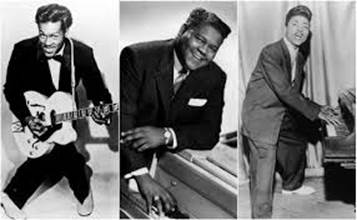
So “Hail! Hail! Rock ‘n’ Roll” (for you youngsters, that’s a Chuck Berry line from “School Days”).
And “Hail! Hail!” Martin Luther King, Rosa Parks and Liu Xiaobo. Enjoy your holiday.
[The above message also ran in the Kansas City Star on January 17, 2011]
January, 2012: “I’ve Been to the Mountaintop”
In 2009, Rita and I traveled to Jordan to see the archeological wonders of Petra. On our return to Amman, we stopped at Mount Nebo where Moses is said to have stood to view the Promised Land. Although Moses had led the Israelites across the desert to this point, he was not allowed by God to continue with them to the Promised Land. Joshua would lead them the rest of the way.
Fast forward from biblical times to April 3, 1968. Martin Luther King was in Memphis to support striking sanitation workers and gave what would be his last speech: “I’ve Been to the Mountaintop.” King prophetically spoke of his likely early death and that he would not get to see the full fruits of his labor in the Civil Rights Movement. “I would like to live a long life; longevity has its place. But I’m not concerned about that now. I just want to do God’s will. And He’s allowed me to go up to the mountain. And I’ve looked over. And I’ve seen the Promised Land. I may not get there with you. But I want you to know tonight, that we, as a people, will get to the Promised Land.”
One of the Memphis hosts for that speech at the Mason Temple was Reverend Billy Kyles. The next day, Kyles drove to the Lorraine Motel to pick up King to take him to dinner. He joined King in his 2nd-floor room with Ralph Abernathy and went with King to the balcony to speak to supporters in the parking lot. A few seconds after Kyles left King alone on the balcony, James Earl Ray fired his shot.
Now fast forward to the summer of 2011. Rita and I, along with our friends Larry and Diana Brewer, were in Memphis. We visited the Lorraine Motel, now the “National Civil Rights Museum,” featuring excellent exhibits on major milestones of the Civil Rights Movement. A compelling reminder of the times is a city bus that you can board, and when you sit near Rosa Parks, a recording is activated to tell you to move to the back of the bus.
The museum tour begins with an introductory movie narrated by Reverend Kyles. At the end of the movie, we were informed that Kyles was in the building filming a piece with CNN newsman T.J. Holmes in anticipation of the opening of the MLK Memorial in Washington. We went to the second floor to watch the filming and then had the opportunity to visit with the gracious Reverend Kyles at almost the exact spot where he had been at that fateful moment in 1968. In the crowd photo below, T.J. Holmes is on the left, Kyles is in the center and the two gentlemen on the right are retired sanitation workers who were among those 1968 marchers carrying placards with the simple words “I AM A MAN”.

The museum continues across the street to the rooming house from which James Earl Ray fired his shot. There are exhibits related to Ray’s planning and capture, and we were reminded that Ray at the time was a fugitive from the Missouri State Penitentiary. The story of Ray and his FBI capture is well told in Hampton Sides’ recent book “Hellhound on his Trail.”
As we approach the holiday weekend, you might want to read or watch “I’ve Been to the Mountaintop” at this link. Enjoy your holiday.